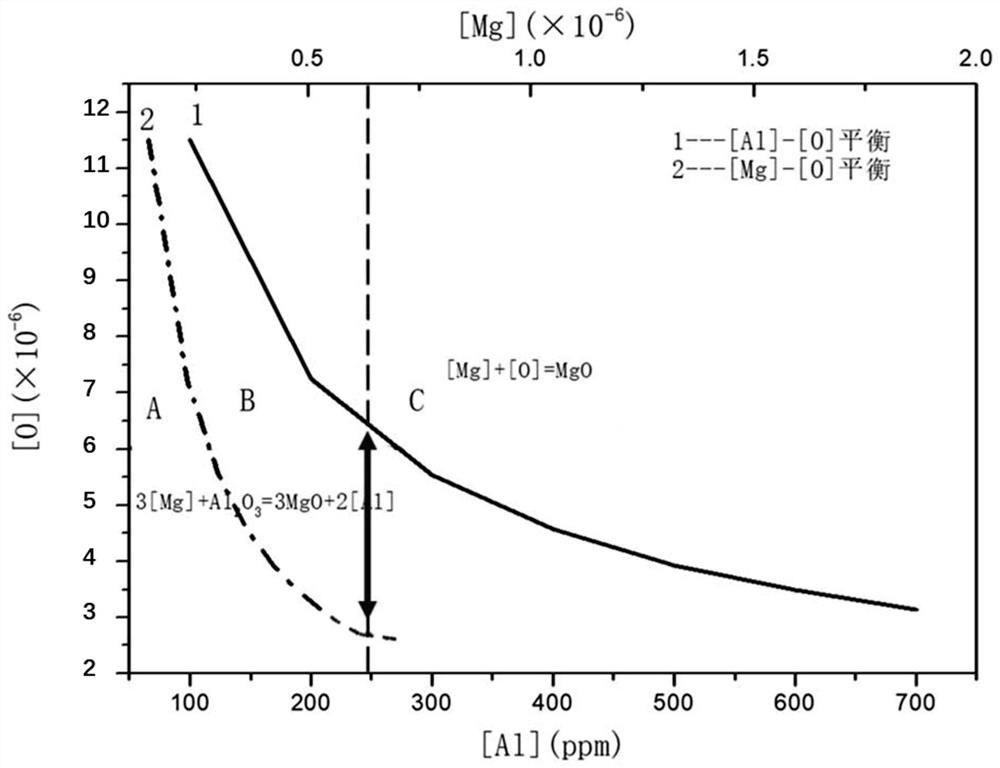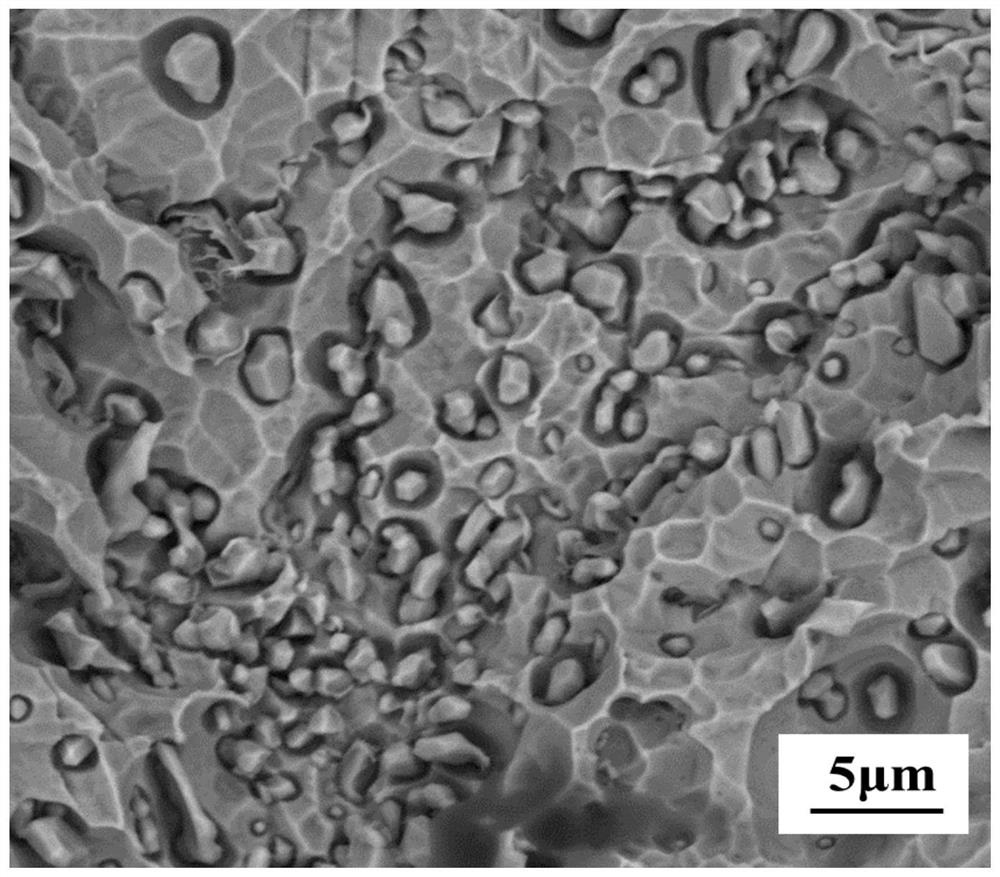Method for modifying carbides in austenitic heat-resistant steel
A kind of austenitic heat-resistant steel and carbide technology, applied in the field of iron and steel metallurgy, can solve the problems of reduced impact toughness, easy nozzle accumulation, serious splashing, etc. stable effect
- Summary
- Abstract
- Description
- Claims
- Application Information
AI Technical Summary
Problems solved by technology
Method used
Image
Examples
Embodiment 1
[0065]This embodiment provides a method for modifying carbides of austenitic heat-resistant steel, which includes sequentially smelting magnesium-containing austenitic heat-resistant steel raw materials through 40t steel electric furnace smelting, AOD furnace smelting, LF furnace refining, feeding The modified austenitic heat-resistant steel is obtained by nickel-magnesium cored wire, continuous casting, rolling, full solution and aging solution; among them, at the end of the LF furnace refining, under the condition of bottom blowing argon, intermittent When feeding nickel-magnesium cored wire, when feeding nickel-magnesium cored wire, the basicity value of molten steel slag layer in LF furnace is 5.5, the amount of molten steel slag is greater than 4% of the amount of molten steel, the refining time of white slag is greater than 25min, and the The amount of slag is controlled at 1.6 tons, and the amount of slag is controlled to be no more than 1.6 tons, so as to prevent the ox...
Embodiment 2
[0070] This embodiment provides a method for modifying carbides of austenitic heat-resistant steel, which includes sequentially smelting magnesium-containing austenitic heat-resistant steel raw materials through 40t steel electric furnace smelting, AOD furnace smelting, LF furnace refining, feeding The modified austenitic heat-resistant steel is obtained by nickel-magnesium cored wire, die casting, blooming, rolling, full solution and aging solution; among them, at the end of the LF furnace refining, under the condition of bottom blowing argon , the nickel-magnesium cored wire is fed intermittently for many times. Compared with the embodiment, the nickel-magnesium cored wire is fed by 20% more. When the nickel-magnesium cored wire is fed, the basicity value of the molten steel slag layer in the LF furnace is 5.5. The amount of molten steel slag is greater than 4% of the amount of molten steel, the refining time of white slag is more than 25min, the amount of slag is 1.6 tons, t...
Embodiment 3
[0075] Compared with Example 1, the method for modifying carbides of austenitic heat-resistant steel in this example is different in that the composition of the magnesium-containing cored wire is different. 15% of Mg, 15% of Ni, 25% of Cr, 0.6% of N, and the balance is Fe and unavoidable impurity elements. In the field production of this embodiment, the wire feeding process is stable, the reaction is gentle, and there is no violent splash.
[0076] The content of magnesium in the modified austenitic heat-resistant steel prepared in this example was 16 ppm as measured by ICP, and the yield of magnesium calculated according to the added amount was 29%. It can be seen from the calculation and verification that the magnesium-containing austenite heat-resistant steel prepared in this example has the following components by mass percentage: C 0.5%, Si 0.31%, Mn 8.75%, P 0.02%, S 0.01%, Cr 20.60% , Ni 4.0%, N 0.48%, Mg 0.0016%, and the balance is Fe and unavoidable trace elements. ...
PUM
| Property | Measurement | Unit |
|---|---|---|
| thickness | aaaaa | aaaaa |
| thickness | aaaaa | aaaaa |
Abstract
Description
Claims
Application Information
 Login to View More
Login to View More - R&D
- Intellectual Property
- Life Sciences
- Materials
- Tech Scout
- Unparalleled Data Quality
- Higher Quality Content
- 60% Fewer Hallucinations
Browse by: Latest US Patents, China's latest patents, Technical Efficacy Thesaurus, Application Domain, Technology Topic, Popular Technical Reports.
© 2025 PatSnap. All rights reserved.Legal|Privacy policy|Modern Slavery Act Transparency Statement|Sitemap|About US| Contact US: help@patsnap.com



